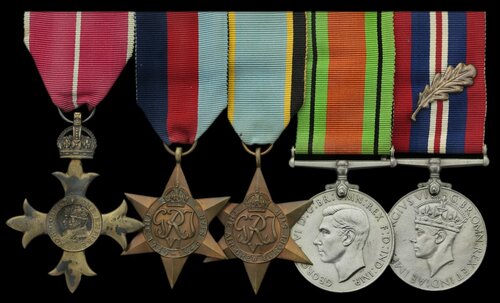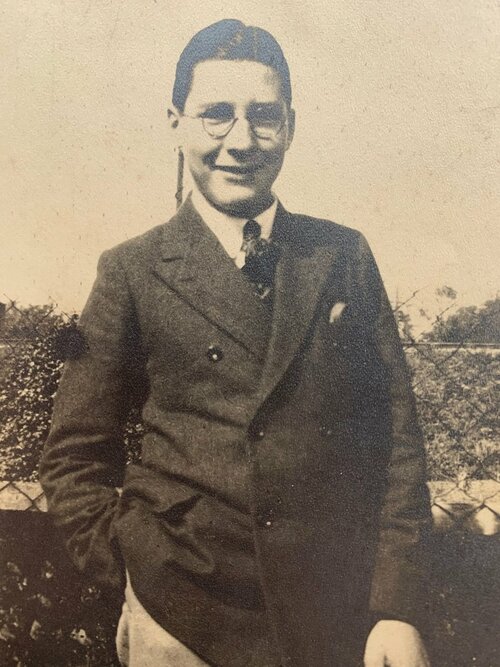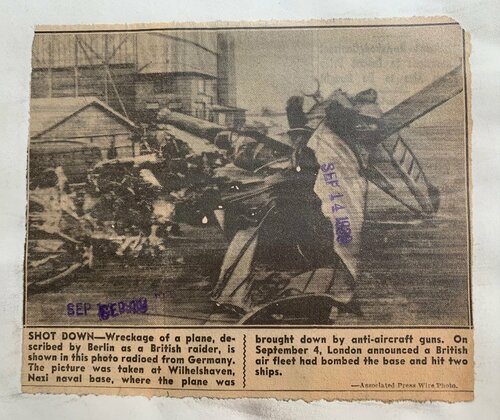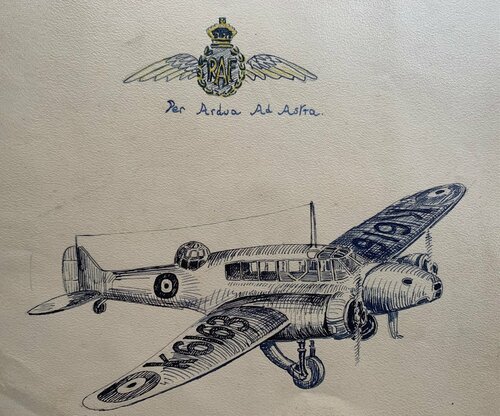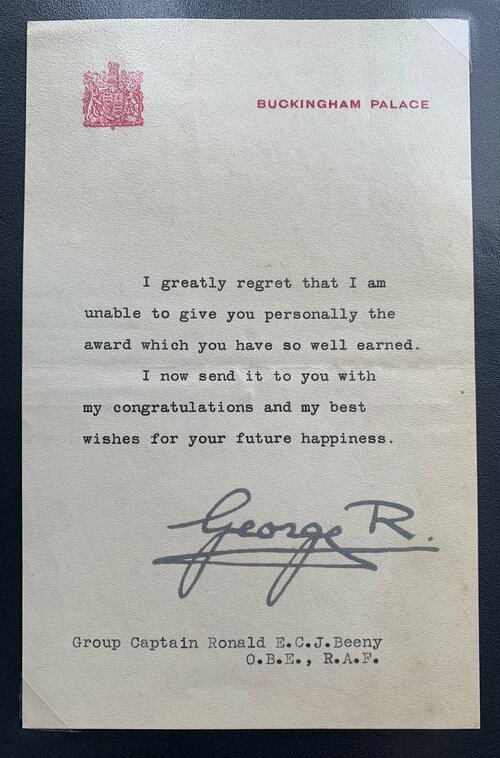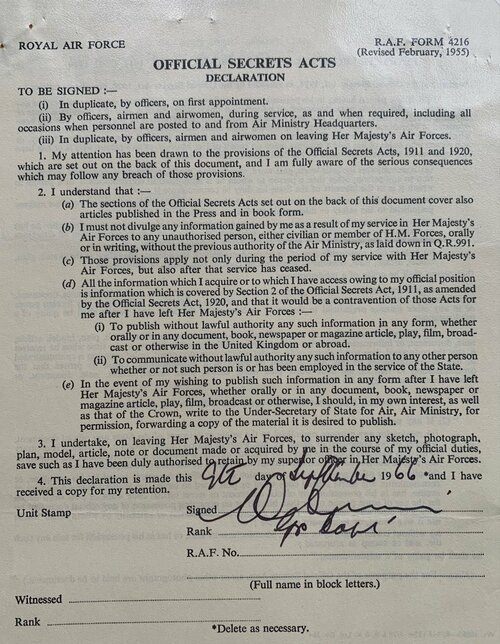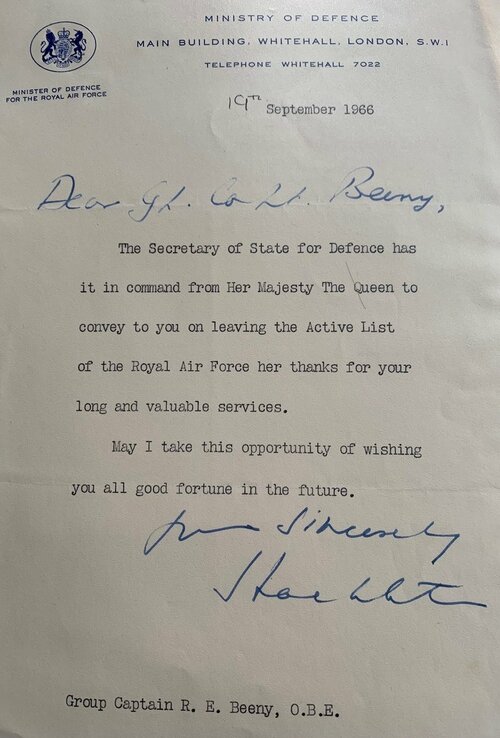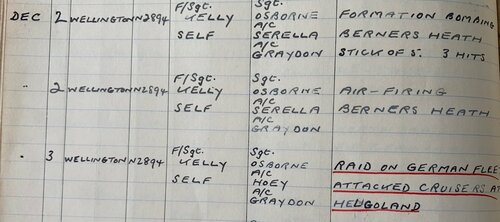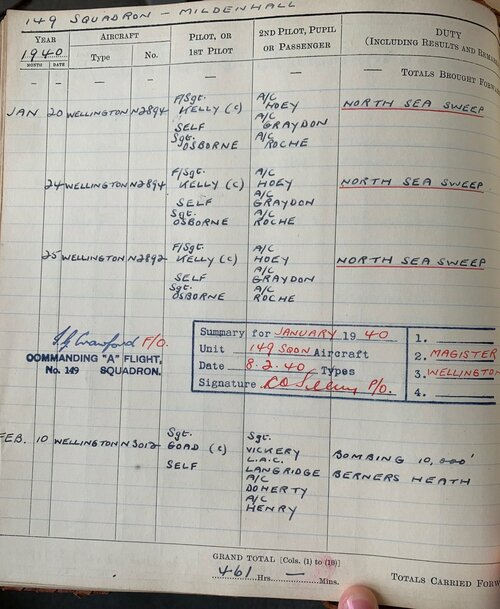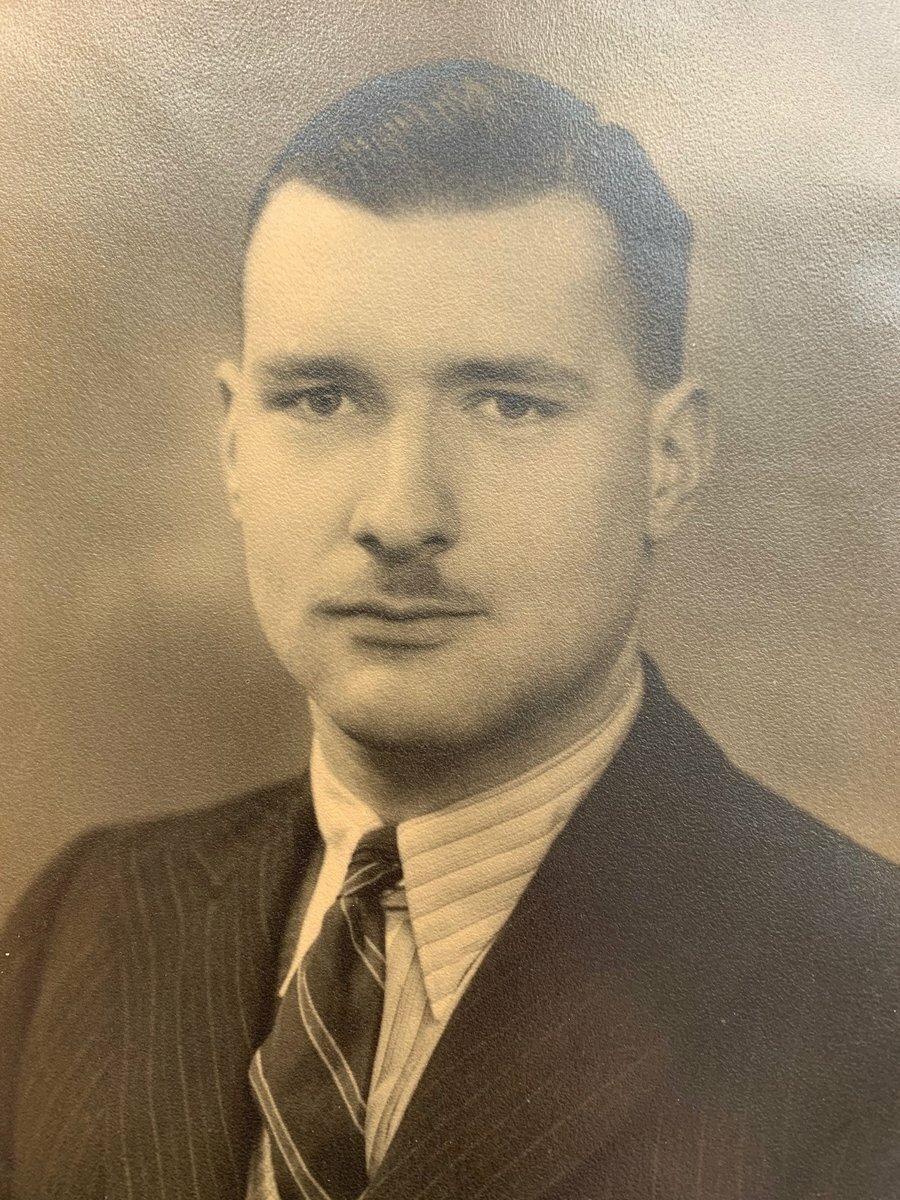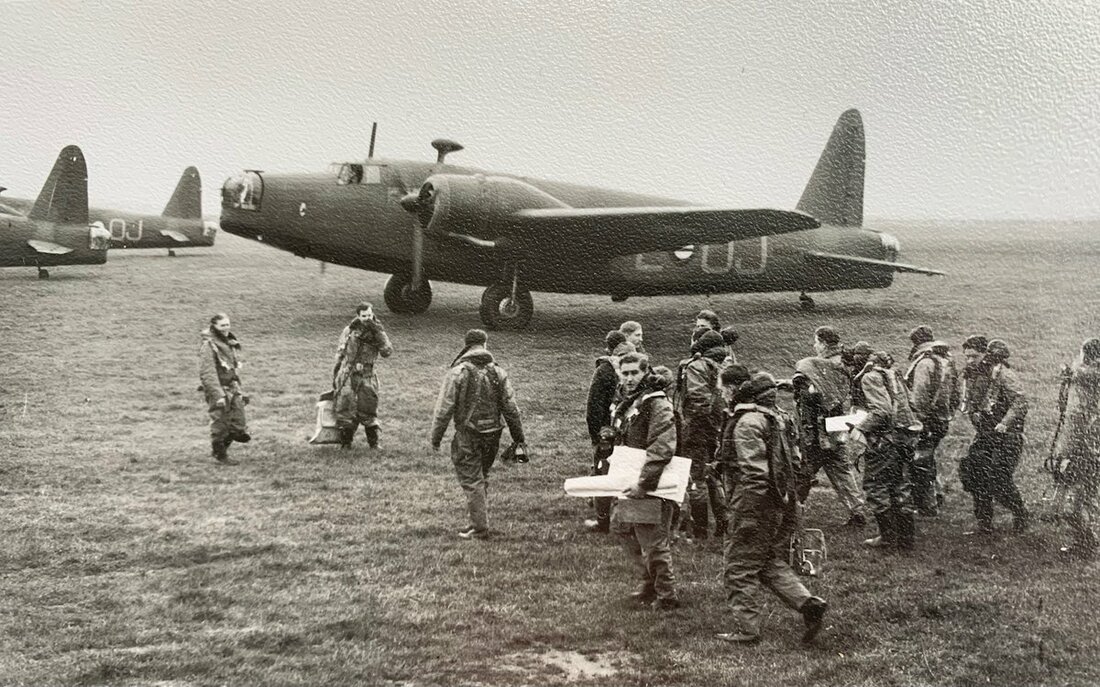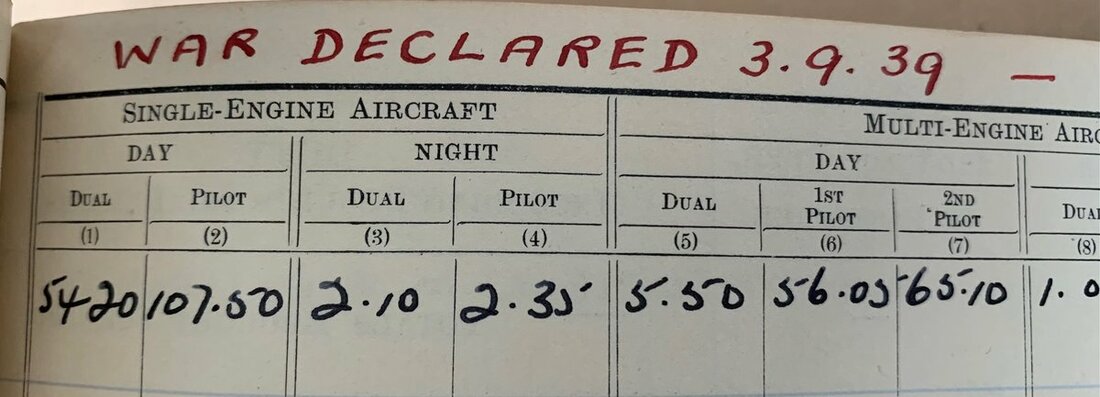Auction: 21002 - Orders, Decorations and Medals
Lot: 244
A fine 'Combined Operations HQ' 1945 O.B.E. group of five awarded to Group Captain R. E. C. J. Beeny, Royal Air Force, who flew the first Bomber Op of the Second World War on 4 September 1939, before notching up and impressive array of sorties in late 1939-40, including being a member of 'Haddock Force' - which raided northern Italy from France in June 1940; Beeny went on to impart his experience on future Pilots before developing into a skilled Signals Officer and playing a role in the D-Day Landings
The Most Excellent Order of the British Empire, O.B.E. (Military) Officer’s 2nd Type breast Badge, silver-gilt; 1939-45 Star; Air Crew Europe Star; Defence and War Medals 1939-45, M.I.D. oaf leaf, mounted as worn, good very fine (5)
O.B.E. London Gazette 1 January 1945. The original recommendation states:
'This Officer has been employed for the past year as Royal Air Force Signals Staff Officer at Combined Operations Headquarters. His work has been invaluable and he has displayed great zeal and enthusiasm. It is to a great extent due to Wing Command Beeny's work and exceptional knowledge that the organisation of HQ Ships for combined operations has been so successful. He has mastered this intricate problem by dint of intelligent and unremitting hard work and splendid co-operation with the other Services.'
Ronald Eric Christopher Joseph Beeny was born on 11 January 1914 and was educated at Shoreham Grammar School. He served as a Cadet in the 4th Battalion, Sussex Regiment from 1925-29 and with the Surrey & Sussex Yeomanry as a Bombardier from 1933-36. Beeny joined the Royal Air Force in 1937, first flying as a Pilot Officer in January 1938. Having completed his training, he qualified 2nd Pilot and joined No. 149 Squadron at Mildenhall in November 1938, flying Heyfords. Re-fitted with the Wellington bomber in January 1939, Beeny was posted to No. 75 Squadron in April.
Opening shots - first Op over Europe
He was returned to No. 149 Squadron in August, with the impending tensions in Europe leading towards the opening of the Second World War. Beeny wrote his own piece of history on 4 September 1939, being part of the first Operational Sortie with Bombers being deployed, in Wellington L4270, the Log Book stating:
'Atk German Fleet - Base - Wagnerooge - Rtnd - Bad weather.'
His image would also have been used in the Ministry of Information's film The Lion has Wings, which filmed the men of No. 149 Squadron from 1-4 September 1939. Late November and early December would also see Beeny flying into action, notably on the raid on the German Fleet on 3 & 18 December, attacking the cruisers at Heligoland in the former and losing the formation in the latter sortie. January & February 1940 saw Beeny busy on North Sea 'sweeps', besides the raid on the German Fleet at Wilhelmshaven. Further raids followed, with a 'nickel' on Hamburg on 23 March and one on Aalborg Aerodrome on 21 April. For that latter raid on Denmark, three Wellington attacked, of which that flown by Flying Officer Knight was lost, with Beeny's kite suffering small arms firm in the starboard engine, cowling, bulkhead and several other oil pipes taking damage. Just four days later Beeny flew on Stravanger Aerodrome in Norway, before delivering 12x 250lb bombs on Aacen on 14 May, and 12 more on Dinant on 17 May.
Fishing for luck
By the middle of June and with the overall situation for Europe looking bleak, Beeny was selected for 'Haddock Force', under Air Marshal Barratt. Based at Salon, Provence, the force of 12 Wellington's, were to be used to attack industry in north Italy. The targets were to be the Caproni Factory in Milan and a major aluminium plant in Genoa. Beeny flew out R3163 from Mildenhall on 15 June, via Towcester, Poole, La Caste, Nantes, Bordeaux, Castres, Arles and onto Salon. Having taken 5hrs5mins of day flying, they set out that same night, the raid to Genoa taking 4hrs10mins, coming into tropical thunderstorms. With France capitulating, by 17 June the runway was being blocked and the evacuation from Salon was ordered. Beeny completed the flight home, with five stops, in 6hrs25mins. Before the month was out he would also bomb Hamburg on 25 June and the Focke-Wulfe Works at Bremen on 27 June.
Beeny was posted to No. 6 Air Observer & Navigator School at Staverton from August 1940-June 1942, being 'mentioned' (London Gazette 1 January 1941, refers), before going up to the No. 1 Signals School at Cranwell. By this time a Squadron Leader, Beeny then served for a short time in Northern Ireland, before being posted to HQ Combined Operations, under Major-General Laycock, in February 1943. Working at For Southwick, Portsmouth, the operation tunnels were some 100ft below and were a central cog in the planning and execution of the D-Day Landings in June 1944. Given the date of his award of the O.B.E., together with his posting, it seems certain this was the basis for his award.
Final furlong
Beeny was promoted Wing Commander in July 1947 and took up further important postings in RAF Signals, being Chief Signals Officer Near East Air Force from 1961-66, taking retirement after some 29 years of service. Beeny died at home in Peacehaven on 1 November 2001; sold together with his two Flying Log Books, both with additional leather slip covers, besides a complete set of documents and letters including named slip upon award of the O.B.E., letters related to his career, retirement and later life, photographs and a good selection of ORB extracts and copied research, housed in a file.
Subject to 20% VAT on Buyer’s Premium. For more information please view Terms and Conditions for Buyers.
Sold for
£1,100
Starting price
£480

